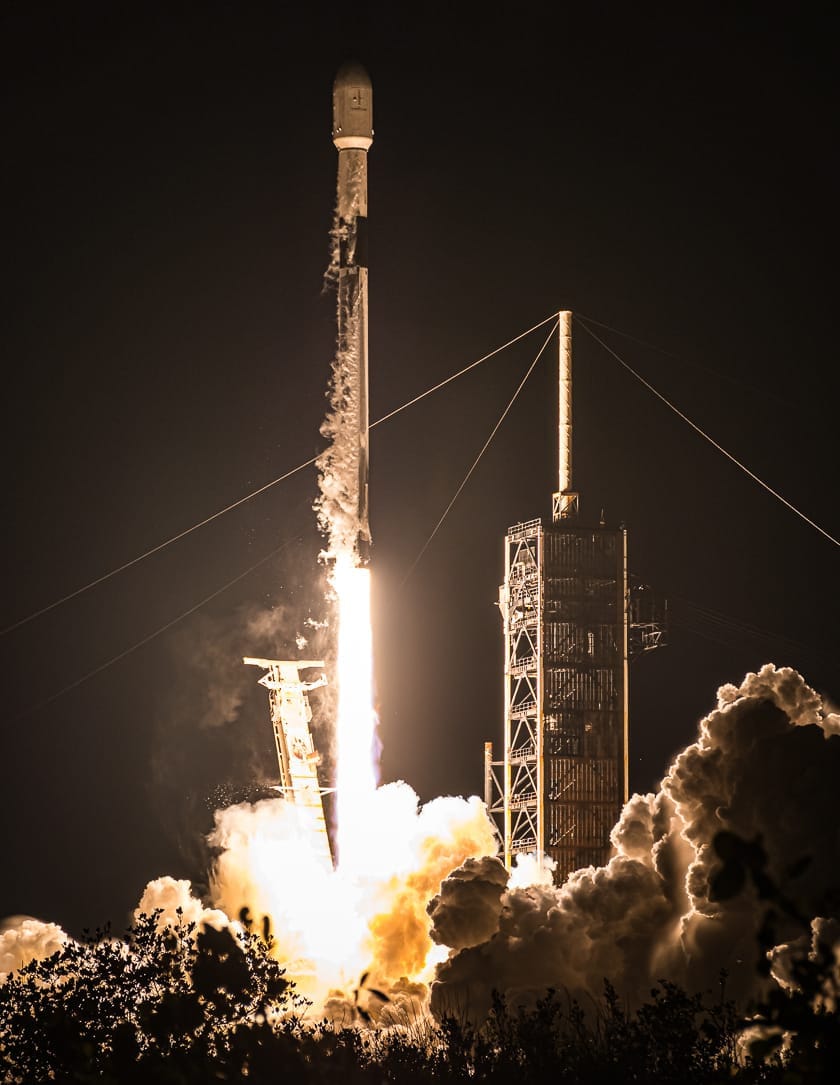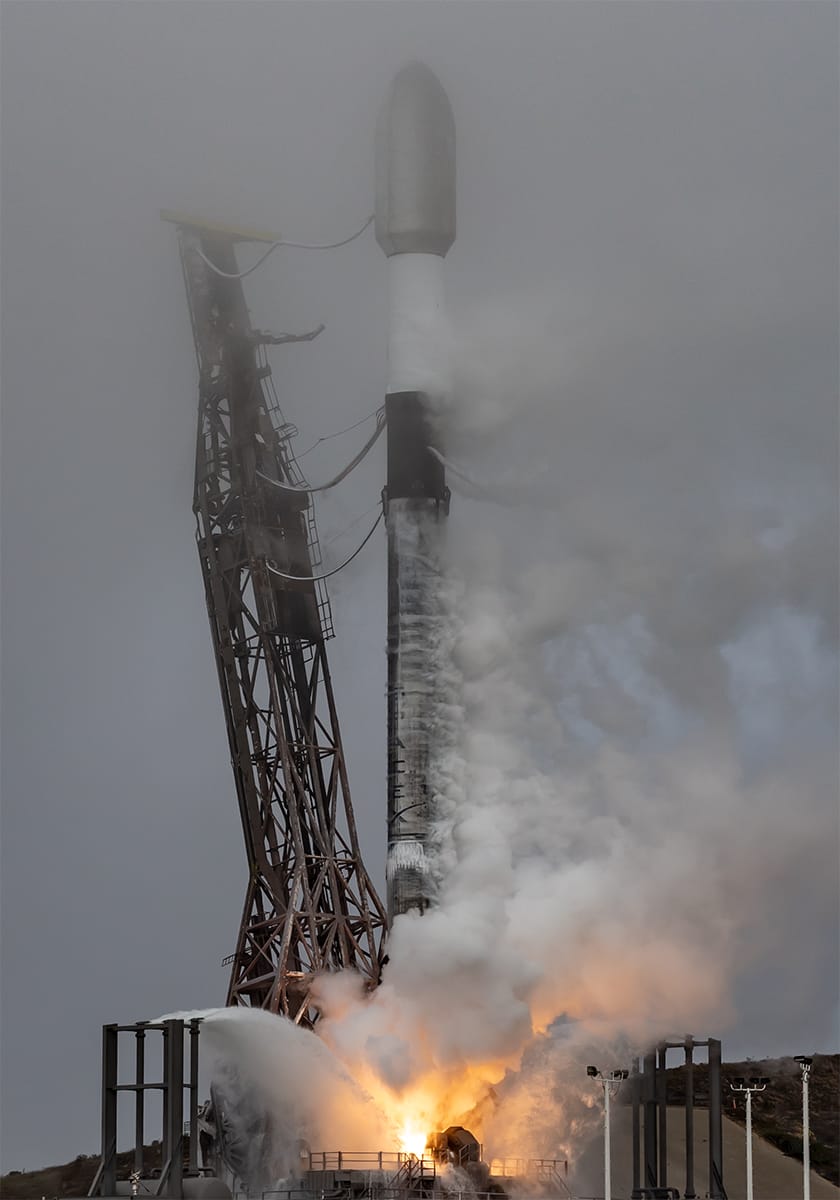Table of Contents
Welcome back to Weekly Dose of Space! This week saw four launches take place, with half for Starlink. News this week had Butch and Suni perform a spacewalk on the International Space Station, Boom going supersonic with the first civilian jet, and Starliner making progress in its post-flight investigation. As always, we'll also look ahead to what the worldwide launch schedule might look like next week.
SpaceX
This week at Starbase began on January 27th when the second towers arms were lifted off of their temporary support structure and onto the tower itself, supported by an LR11000 crane. By the following morning, the arms were lowered onto their stopping point on the tower before being released from the crane. The 28th also had the temporary support structure disassembled.
Bit late...laptop drama...but the choppies are now on Tower 2! Seems a lifetime since we first saw them at the Cape! I have a few angles, but they'll have to wait until tomorrow now...03:30 already and I'm out tomorrow morning! 💤😴@LabPadre pic.twitter.com/0xf0mKgp8G
— VixXi (@VickiCocks15) January 28, 2025
The second towers arms being lifted, via VickiCocks15 on X.
A few days later on January 31st, the aft section of Ship 35 was spotted leaving the Starbase factory and into the second 'megabay' ahead of the completion of Ship 35's main body. To begin work for February on the 1st, the second towers arms received their traveling block, which once attached to various cables will allow the arms to travel up and down the tower.
Launches This Week
January 27th - Falcon 9 with Starlink Group 12-7
Falcon 9 flew to low Earth orbit from Space Launch Complex 40, in Florida, carrying twenty-one satellites. The booster supporting this mission was B1076, making its twentieth flight and landing on the drone ship 'A Shortfall Of Gravitas' downrange.

January 29th - GSLV MkII with NVS-02
A GLSV MkII rocket carried the NVS-02 (IRNSS-1K) satellite to a geostationary transfer orbit from India's Satish Dhawan Space Center. NVS-02 is part of the Navigation with Indian Constellation (NavIC). This launch was also the 100th from the Satish Dhawan Space Center.
🌍 A view like no other! Watch onboard footage from GSLV-F15 during the launch of NVS-02.
— ISRO (@isro) January 29, 2025
India’s space programme continues to inspire! 🚀 #GSLV #NAVIC #ISRO pic.twitter.com/KrrO3xiH1s
The launch of GSLV MkII with NVS-02, via ISRO on X.
January 30th - Falcon 9 with SpainSat NG-I
SpaceX launched the SpainSat NG-I spacecraft, a satellite for the Spanish military, atop of Falcon 9 from Launch Complex 39A, in Florida. Booster B1073 supported this mission for its twenty-first and final flight.

February 1st - Falcon 9 with Starlink Group 11-4
Another batch of twenty-two Starlink satellites were delivered to low Earth orbit atop of Falcon 9, flying from Space Launch Complex 4E in California. Supporting this mission was booster B1075, making its seventeenth flight and landing downrange on the drone ship 'Of Course I Still Love You'.

In Other Space News
Suni and Butch conduct ISS spacewalk

NASA astronauts Suni Williams and Butch Wilmore, who flew to the International Space Station on Boeing's Starliner spacecraft, conducted a spacewalk outside of the station on January 30th. NASA states that both spacewalkers completed their primary objects outside of the station, including removing a radio frequency group antenna assembly from the station’s truss and collecting samples of surface material for analysis from the Destiny laboratory and the Quest airlock.
This spacewalk was Williams' ninth and Wilmore's fifth, the duo spent 5 hours and 26 minutes outside of the station. For the spacewalk Suni wore a suit with red stripes while Butch wore an unmarked suit, these marking help ground controllers assist and observe the spacewalkers. With the spacewalk Suni surpassed Peggy Whitson’s record for most total spacewalking time by a female astronaut of 60 hours and 21 minutes, bringing the record to 62 hours and 6 minutes.
After the spacewalk, NASA gave the astronauts a half-day off from usual work onboard the station. The following day Butch and Suni spent an afternoon servicing their spacesuits and cleaning the Quest airlock.
Some readers may recall that Suni Williams and Butch Wilmore have been onboard the International Space Station since early June, almost eight months ago, due to problems with the Starliner spacecraft. Both astronauts are currently expected to return on the Crew-9 Crew Dragon spacecraft with Nick Hague and Aleksandr Gorbunov in late March.
Boom goes supersonic

On January 28th Boom performed the first supersonic flight of a civilian jet from the Mojave Air and Space Port in California in the company's latest test flight using its XB-1 demonstrator aircraft. This test flight was flown by Boom's Chief Test Pilot Tristan “Geppetto” Brandenburg.
During the supersonic test flight, XB-1 flew at an altitude of 35,290 feet and reached a top speed of Mach 1.122 (roughly 750 miles per hour). Speaking after the test flight Boom's founder and Chief Executive Officer Blake Scholl said:
“XB-1’s supersonic flight demonstrates that the technology for passenger supersonic flight has arrived. A small band of talented and dedicated engineers has accomplished what previously took governments and billions of dollars. Next, we are scaling up the technology on XB-1 for the Overture supersonic airliner. Our ultimate goal is to bring the benefits of supersonic flight to everyone.”
By next year Boom is hoping to begin test flights of its Overture supersonic airliner, slated to carry between sixty-five and eighty-eight passengers while traveling at speeds of Mach 1.7. Regular flights of Overture are currently expected around 2030 with one hundred and thirty aircraft on order for American Airlines, United Airlines, and Japan Airlines.
Starliner investigation making "significant progress"
According to SpaceNews, NASA and Boeing teams are making "significant progress" on solving issues of the Starliner spacecraft from its crewed flight test that began in June last year.
According to Paul Hill, a member of the Aerospace Safety Advisory Panel, at a public meeting, NASA-Boeing teams have begun closing out flight observations and in-flight anomalies. However, investigations into the spacecraft propulsion systems will remain open pending the results of test campaigns.
No timeline for another Starliner flight has been provided by NASA yet but Hill stated that the agency is keeping its options available for a certification flight in 2025. It is unknown whether the next flight will carry a crew.
What to Expect Next Week
Starbase
SpaceX is currently preparing for Starship-Super Heavy's eighth flight test, utilizing Ship 34 and Booster 15. Both vehicles have conducted cryogenic testing needed ahead of static fires, which are expected in the coming weeks.
February 2nd - H3 with Michibiki-6
A H3 rocket is planning to liftoff from the Tanegashima Space Center carrying a navigation satellite to geostationary transfer orbit.
February 3rd - Falcon 9 with Starlink Group 12-3
A Falcon 9 is expected to carry a batch of Starlink satellites into low Earth orbit from Space Launch Complex 40.
February 3rd - Electron for 'IoT 4 You and Me'
Rocket Lab is planning to perform its fourth Electron launch for Kinéis' Internet of Things constellation with liftoff expected from the company's facility on the Māhia Peninsula.
February 3rd - Falcon 9 with WorldView Legion 5 & 6
Another Falcon 9 is expected to launch from Launch Complex 39A carrying two WorldView Legion satellites into low Earth orbit for Maxar.
February 4th - New Shepard with NS-29
Blue Origin is planning to perform a sub-orbital mission with its New Shepard vehicle from its West Texas launch site carrying various science experiments briefly above the Kármán line.
February 5th - Soyuz 2.1v with a to-be-announced payload
A Soyuz 2.1v is expected to liftoff from the Plesetsk Cosmodrome no earlier than February 5th.
February 7th - Falcon 9 with Starlink Group 12-9
Yet another Falcon 9 is expected to liftoff from Space Launch Complex 40 with a batch of Starlink satellites bound for low Earth orbit.







